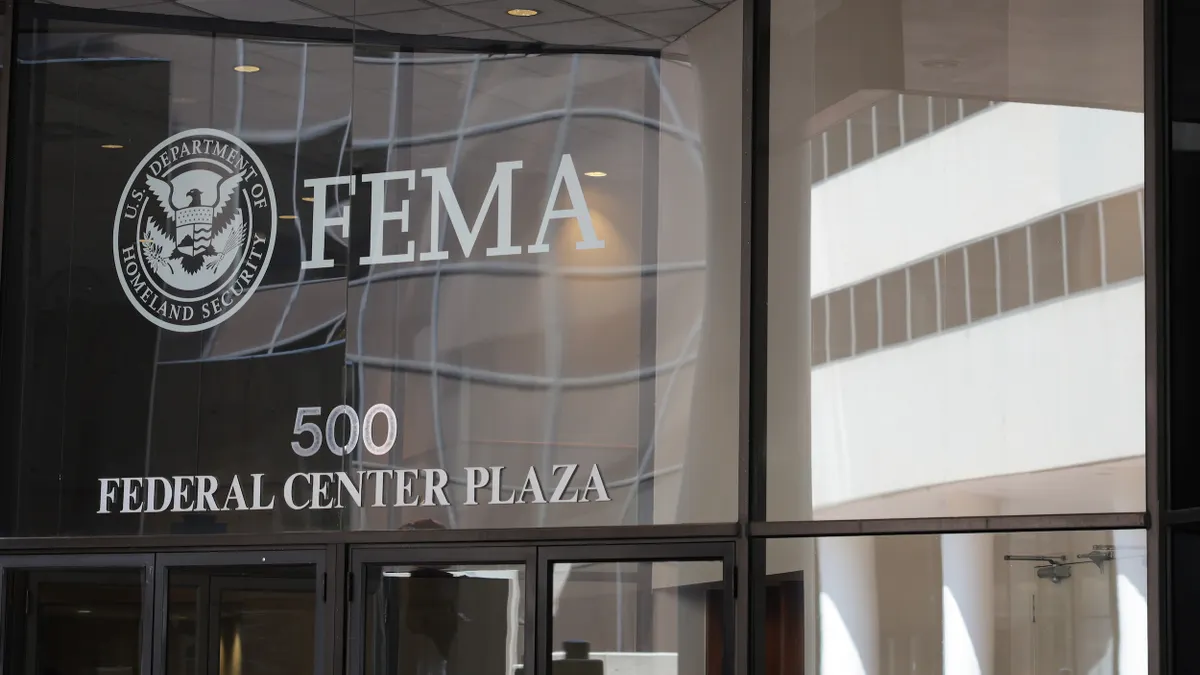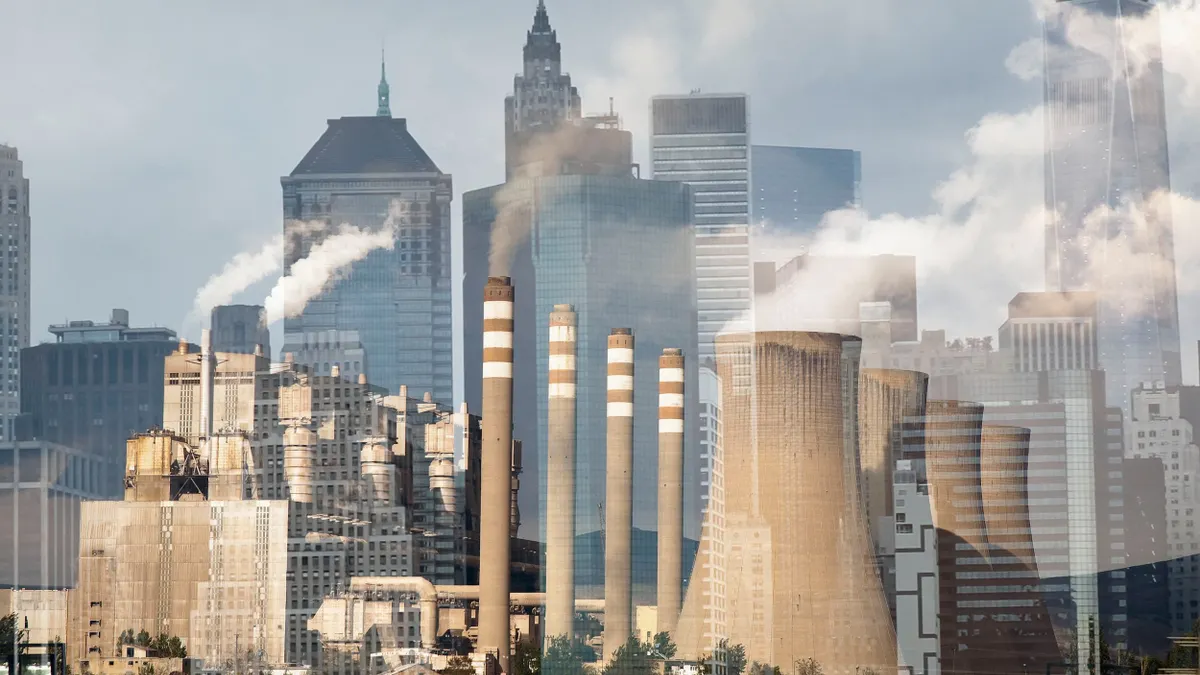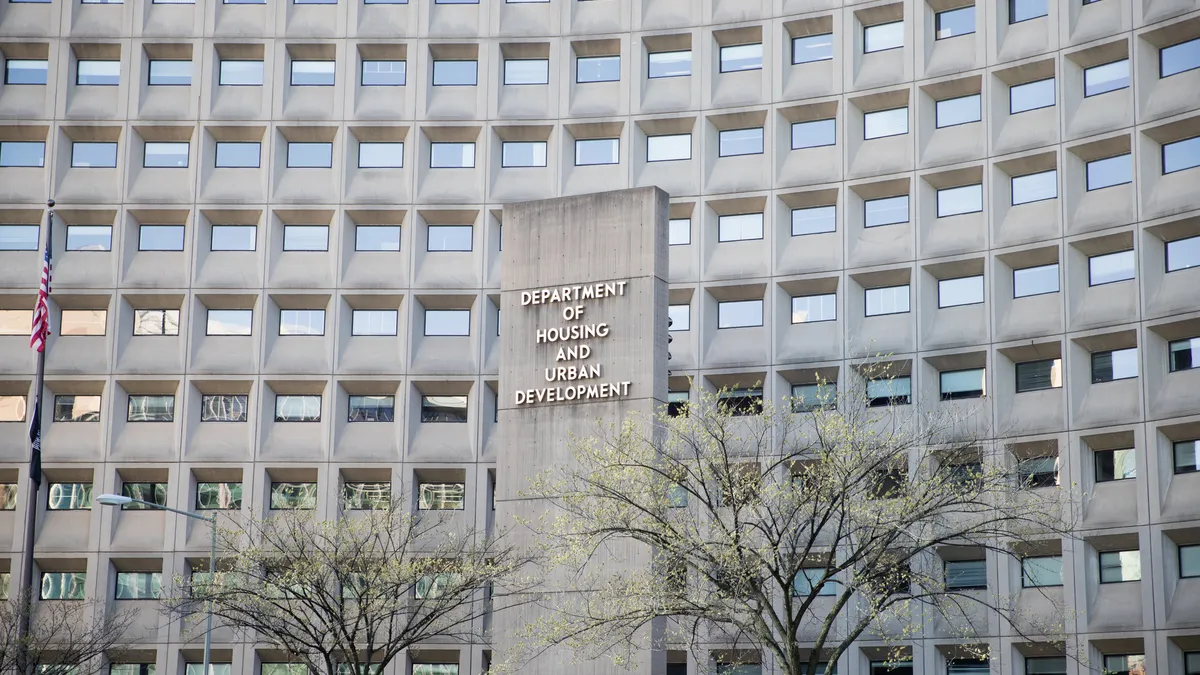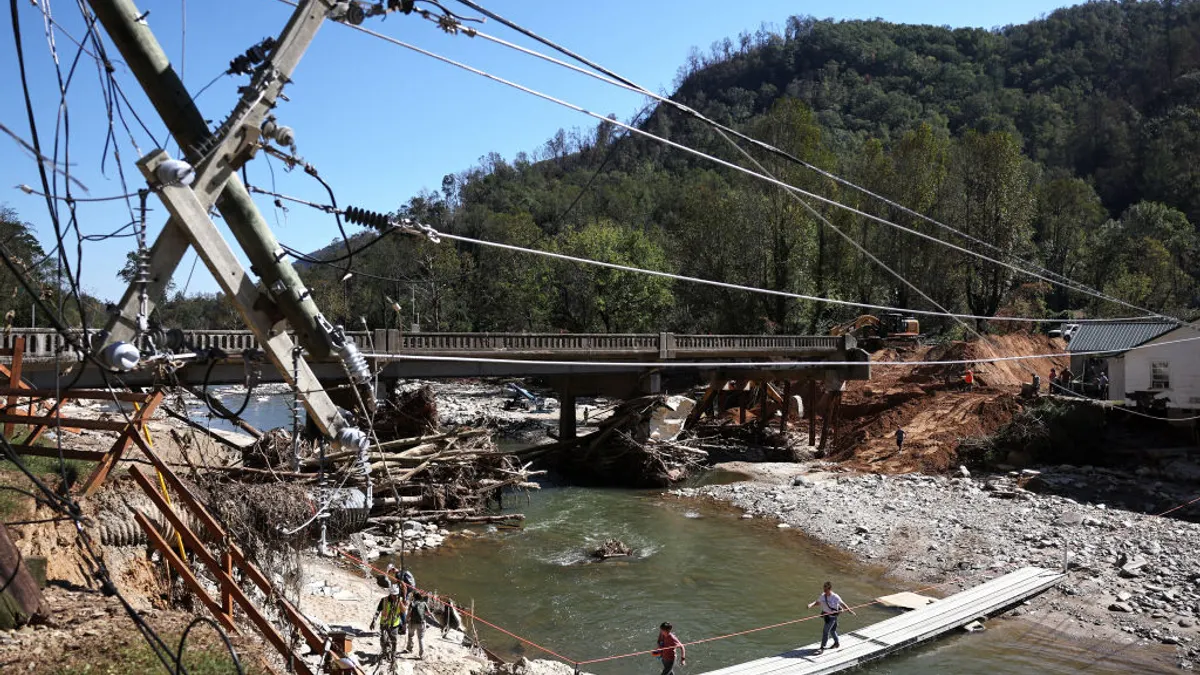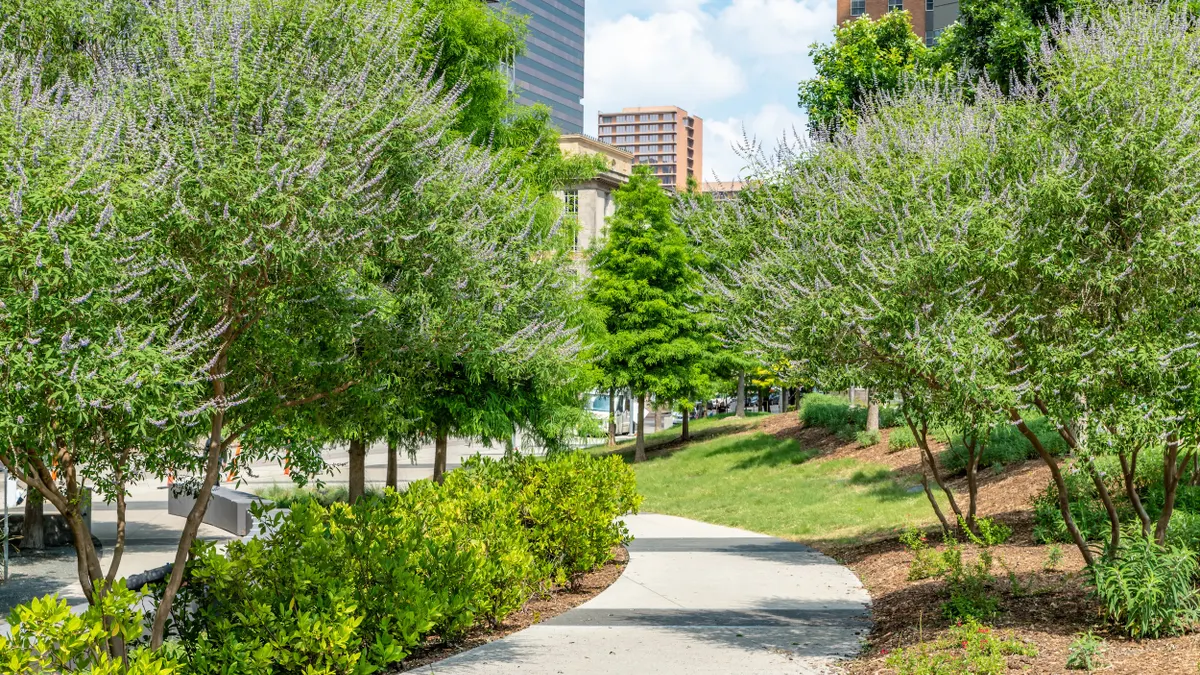Hurricane Michael caused widespread devastation when it hit the Florida Panhandle last October. In April, scientists at NOAA's National Hurricane Center reclassified the storm from a category 4 to a category 5 when it made landfall. No hurricane of that strength has made U.S. landfall since Hurricane Andrew in 1992. President Trump said this week the upgrade to a category 5 will allow addition federal government aid, promising $448 million to affected Florida cities.
Nearly seven months after the hurricane, recovery efforts are well underway, but cities — including Panama City, FL — still are waiting to receive federal aid. The sluggish pace of funding distribution mirrors what Houston's leaders experienced following 2017's Hurricane Harvey, when they waited more than a year after the storm for the first funding infusion.
"We're still looking at getting Congress to make the supplemental appropriation... It still has not made a single appropriation for Hurricane Michael. We're trying to get HUD to release funding and to get FEMA to accelerate implementation of all their programs... and get the IRS to implement tax relief similar to other disasters, like Hurricane Harvey," Panama City Assistant City Manager Jared Jones told Smart Cities Dive.
Earlier this National Hurricane Preparedness Week, Smart Cities Dive spoke with Rhonda Binda at Venture Smarter about technology's role in a city's preparedness. Here, we spoke with Jones about cities ensuring action plans and training drills are in place, as well as what Panama City's leaders learned from their experience with Hurricane Michael.
This interview has been edited for brevity and clarity.
SMART CITIES DIVE: What were Panama City's main takeaways regarding its preparedness for Hurricane Michael?
JARED JONES: It's hard to prepare for a category 5 hurricane. When communications are completely knocked out from landline to cell phone... there's not a lot that prepares you for that. But as far as what people needed to do and the action they needed to take in that situation, fundamentally we were prepared. This certainly gave us the realization we need a big focus on training and disaster response and recovery. But we were able to meet the needs of our citizens very quickly.
We put our emergency action plan into effect the evening before the storm... We had a commission meeting the day before the storm and after that a brief emergency action meeting, saying it looks like this is going to be a training opportunity so let's learn everything we can from our emergency action plan.
Each one of these disasters is unique so solutions are innovative at their core. The city manager was able to come up with some innovative solutions fast. The five comfort stations we did allowed people to connect to Wi-Fi — Verizon was generous enough to bring out a mobile cell tower for each one of those... We knew in order to avoid population flight and a public health crisis, we had to provide in some way, shape or form for our citizenry. [The comfort stations] offered showers and food and water and ice... There was a need [for us] to be able to provide communications, water and sewer — those basic human needs. That was the best and most cost effective solution at that time. Those were in operation for several weeks after the storm until we got water and sewer back online.
Every natural disaster has its own unique challenges. Hurricane Michael was a wind event... Hurricane Katrina, that was a water and surge event... The challenges we face recovering from Michael are a lot different from other storms because of it being a unique wind event... Take Hurricane Irma, that affected 50+ counties in Florida... maybe three to four months later things were somewhat back to normal.
I think "back to normal" for Panama City and Bay County is going to be a much longer journey. I'm focusing on hurricanes, but you could talk about tornado or earthquake or wildfire or massive flooding events like we've seen in the country since Michael happened. Each one presents its own challenges and dictates what your response will be and the resources necessary to respond correctly. The safety and security of the population is foremost.
It sounds like you were able to leverage some private sector partnerships — such as with Verizon — for the storm response?
JONES: Yes, in certain regards. Once we got our FEMA public assistance person, we leveraged all the information could get from them, but we also knew that we had to take care of our people now. We worked through our [emergency operations center] EOC to get [meals ready to eat] MREs and ice here as fast as possible.
But yes, we certainly leveraged private partnerships as well... They had the ability to react just as fast if not faster than state emergency management resources.
You mentioned using this incident as a training opportunity. In which areas did you find trainable moments?
JONES: Redundant communication would be one of them. As far as a training exercise, it would be how do cities communicate their needs to the counties when communications are down, and how do the cities communicate to the state? How do we train on those redundant systems of communication is the bottom line... I think Bay County and Panama City did a very good job coordinating with each other.
As a wholesale, we want to train our employees on the National Incident Management System and all the free and advanced training out there for emergency operations and disaster training that FEMA provides. We're looking into that now to train our staff... and do those trainings annually. We're looking at doing internal roundtables just for our city, whether it be natural disaster or a manmade... we want to respond to that and immediately know who's in charge and the command system that those methodologies provide.
A great example is last year we used July 4 as an opportunity to exercise our emergency management system. We used it like a command system to run an event from a police and fire perspective. It's not just about using [training] opportunities in an actual disaster, but using different events to keep that muscle memory strong.
Talk about the work Panama City is doing on its long-term recovery plan.
JONES: We had several kick-off meetings the past several weeks. The Long Term Recovery Plan sets priorities for ongoing community resilience and effective recovery from future storms. [Drawing up a framework] is the first thing we've got to get done. Action item number two is an economic development strategy that will build on existing strengths and key partners to help grow the city's economic environment beyond pre-storm conditions. The third one is a master plan or strategic plan, our vision that sets the priorities for the city's downtown, its waterfront and other areas... how to move forward and redevelop the city. And certainly we have a comprehensive communications plan that's going to provide pathways to shape the future vision of the city. All those [pieces] provide for heavy community input. We're hoping to have those wrapped up by the end of September; it's a very aggressive timeline.
All of our deliverables are tied to four main lines of effort: The first is safety and security, the second is economy, then quality of life and then infrastructure. All four of those are major focuses within the recovery of our city.
We realize that no plan is worth its weight unless you resource it... This plan, once done, is required to be resourced whether it's through grants or FEMA funding or additional sources of revenue. We've challenged [stakeholders] to resource the plan so at the end of the day it becomes feasible in the real world.
Florida attracts a lot of tourists who help drive cities' economies. Following a hurricane, how do you balance the safety and security of your own citizens with bringing back tourism to financially benefit the area and speed its recovery?
JONES: You're right, it's a balance. We want to make sure to provide the safety and security for our population but certainly open up the city for visitors.
Immediately after the storm we couldn't provide water, sewer, power and food. So it was a difficult decision for our leaders to open the county back up to people who had evacuated. The problem is, if you don't open it back up, for the next storm people will not evacuate. And if you do it too early, you risk not being able to sustain the population you have. It was a difficult call.
Weeks after the storm we were not in a position to entertain any tourists. We had to take care of the people we had here who did not have alternate housing or locations to stay in... Power was up within two weeks after the storm [and] we had sewer and water back up within a week-and-a-half after that.
That's the balance — immediately after the storm, making sure we could sustain the population left behind, and when additional population did come back, sustaining those. I think we're about to the point where in next few months we'll be able to sustain more as more hotels and restaurants and businesses come back online. We're well on the way — not to being pre-storm, but to being vibrant and having a great quality of life very soon.
[Most of] our tourism base, that activity happens in Panama City Beach, and fortunately that economic driver was somewhat safe. But we do rely on tourism in Panama City as well. We have entertainment districts and vibrant nightlife, so when those were damaged, what's the balance and how do we get people back? Thankfully, our community development corporation is nested within our tourist development corporation for the county. They assisted us and certainly the [Bay County Tourist Development Council] is advertising Panama City Beach as open for business.
Here in Panama City, we're telling people who visited before that we'll let you know when the city is back and you can visit again. We're rebuilding now and we'll be bigger and better than ever... We've got a tourism opportunity, but there's still a lot that needs to be done to get us whole again.
What did you learn from the storm besides lessons for preparedness and advance planning?
JONES: Our people — city staff and employees and citizenry — there's a lot to be said about how they responded. I'm so honored and proud to be part of this organization with the way we responded.
We had first responders that rode the storm out in fire and police stations waiting to help citizens without regard to their own personal property... That includes fire, police, public works and utility workers. In that type of situation nearly every city employee becomes a first responder.
Then our citizens — there was a "neighbor helping neighbor" mentality and lot of volunteerism... [Hurricane Michael] was a game changer for this community. You saw things happen that wouldn't otherwise in a diaster. That's one part of the story... that makes me very proud to be a part of this community.








